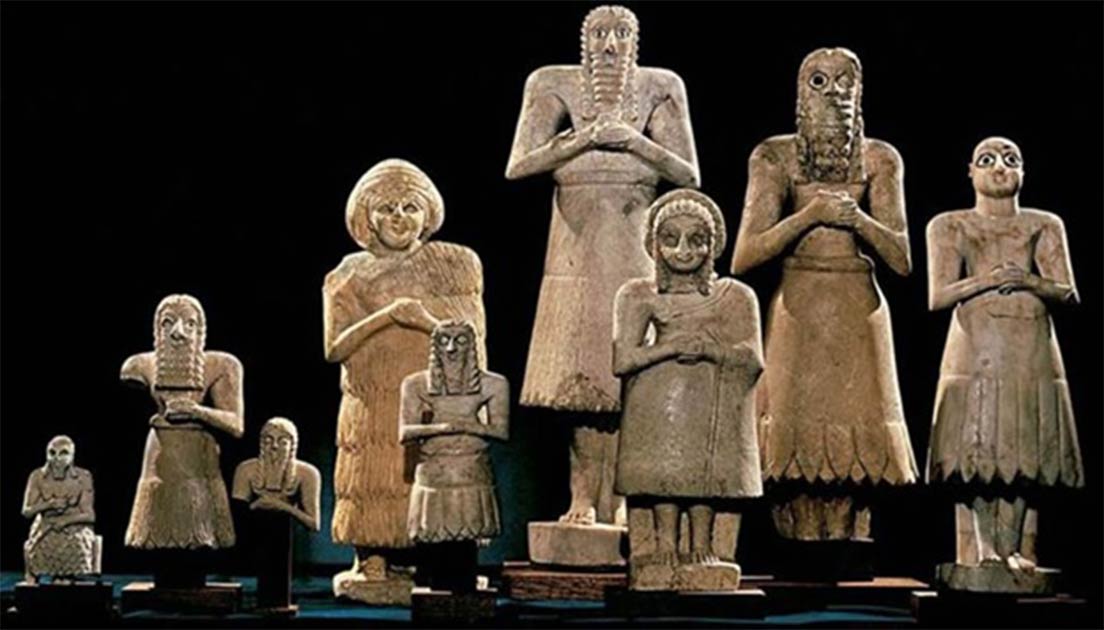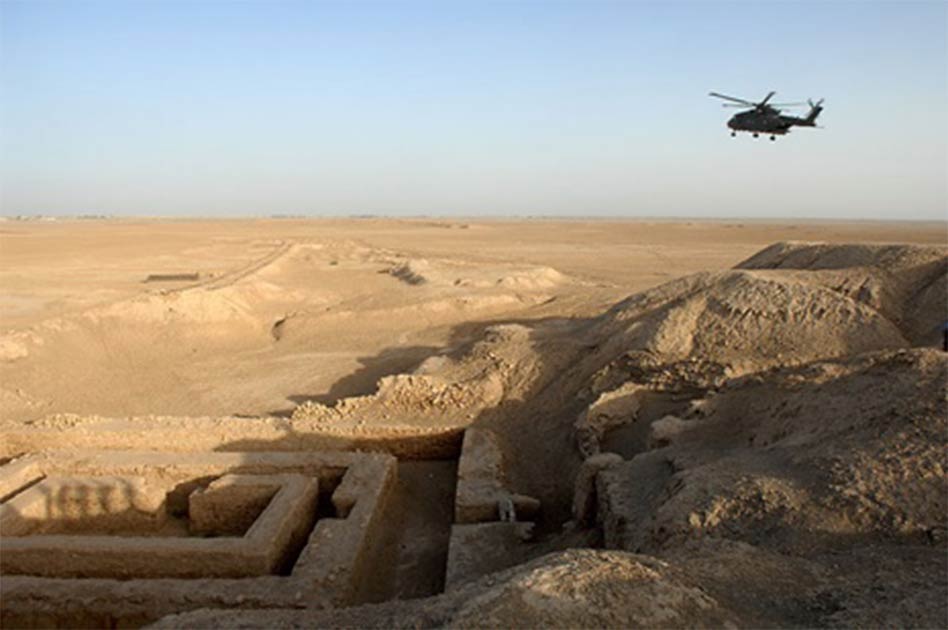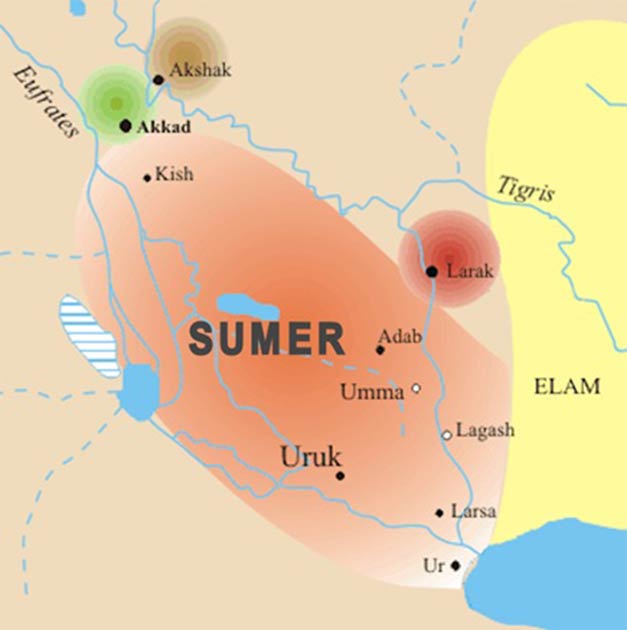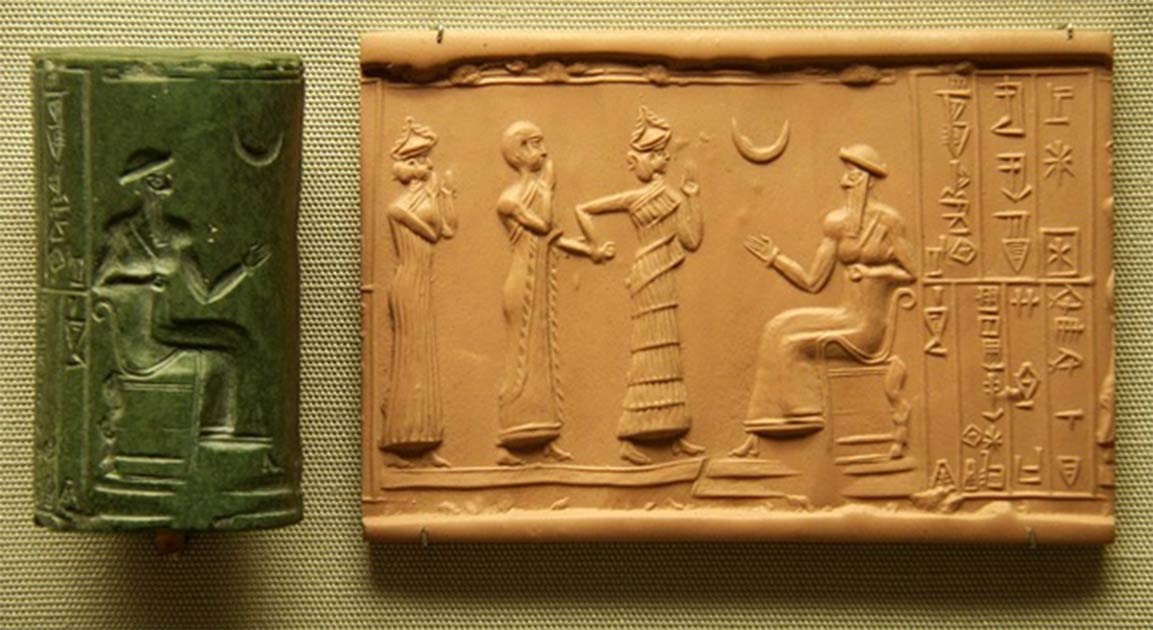
The Nephilim Tradition From Ancient Sumer
The oldest literary tradition about great heroic kings claiming to have been scions of the gods dates back to the Sumerian King List in which the First Dynasty of Uruk is described as having been descended from the sun god, Utu. There are, however, myths that might even be older, myths that hold the key to gaining a better understanding of this very strange albeit fascinating claim. The earliest story of gods fathering earthly offspring was told about the first royal House of Uruk in Sumer. For the Sumerians this dynasty was unlike any other. They regarded this royal dynasty as one of the greatest dynasties, if not the very greatest, ever to have ruled over Sumer. On top of it all, this royal house was said to have been descended from the great gods themselves!

Uruk Archaealogical site at Warka, Iraq (Public Domain)
Descent From The Gods
According to the Sumerian King List, the first House of Uruk, currently called the First Dynasty of Uruk so as to distinguish them from later dynasties who ruled in Uruk and who also tracked their descend back to the early Urukites, descended from the sun god, Utu. This means that the members of this dynasty were not mere human beings but rather offspring of the gods. For the ancients, this superhuman descent was visible in the great and mighty deeds done and performed by those heroes, mighty men like Enmerkar, Lugalbanda, Dumuzi and Gilgamesh. The epic deeds done by these heroes are reflected in the great monuments attributed to them, monuments that date back to the Uruk Period in Sumerian history. In fact, the tradition about these early Urukite kings can be correlated with remarkable consistency and precision with developments taking place during the Uruk Period.

Sumer Map indicating location of Uruk (Summa/ CC BY-SA 3.0)
In this reconstruction of events, Meskiagkasher, founder of the first House of Uruk and son of Utu, came from Aratta to the land of Sumer in the period directly after the great deluge, as attested to in the flood layers separating the Ubaid Period from the Uruk Period in southern Mesopotamia at places like Ur, Uruk, Eridu and elsewhere in the area. This means that the descent of the first House of Uruk from the sun god might have had its roots in an even earlier tradition going back to the time before the deluge. The link between this House of Uruk belonging to the greatest of Sumerian heroic epochs and the great and brilliant innovations in building, writing, surplus production and so forth which characterised the Uruk Period, partially explains why some of those rulers were in time seen and regarded as scions of the gods or Nephilim, as these heroes were later called in the biblical tradition.

Sumerian Cylinder Seal of King Ur-Nammu. Sin/Nanna himself is indicated in the form of a crescent. (CC BY-SA 2.0)
The question arises as to why the House of Uruk was regarded as scions of the sun god, Utu. In Sumerian tradition, Utu was the son of the moon god, Nanna, also called Suen, and later Sin by the Semites. This is very important as Nanna was closely associated with the hieros gamos or sacred marriage ritual. Participants in these rituals were described in Nanna terminology and symbolism, with the high priest and high priestess taking on the roles of Nanna and his consort, Ningal, or ‘great lady’, envisaged as a bull and a cow.




